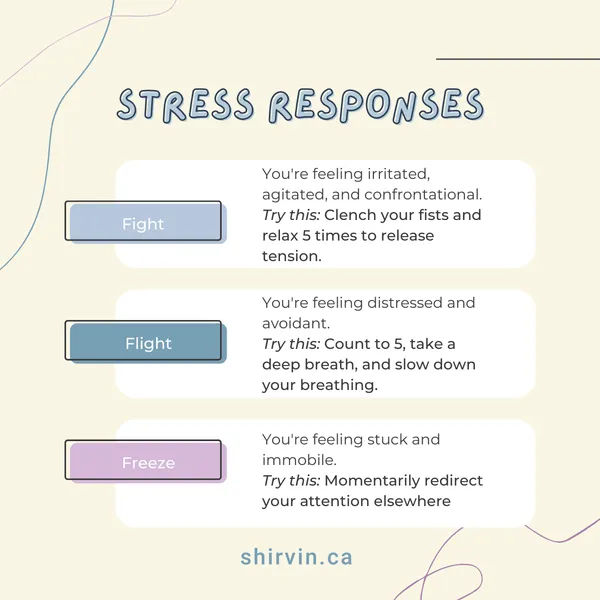How to Reframe Difficult Situations
This blog post is associated with episode 31 of the podcast.
Reframing is a way for us to broaden our perspectives, consider an alternative, and extend compassion to others and ourselves. It can be challenging to do at the moment but with practice, it gets easier - even if it's in hindsight.
Take this as another opportunity to practice reframing and honing your skill! Just like how mental health is a muscle, the ability to reframe situations is also a muscle that we need to constantly work on for it to not only become stronger but to maintain it as well.
The main tool that you’ll need for this is your willingness to rethink and broaden your perspective. I bet you’ve heard the phrase “It’s all in your head” before…and surely enough, while it has a negative connotation to it, there is also some truth to it as well.

We sometimes tell ourselves that hindsight is 2020, which means when we’re able to look back on a situation, it’s more clear to us and we might learn from it or wish we had responded in a different way. Cognitive reframing, or reframing for short, refers to changing the way we look at something, which can change how we experience something. When we’re faced with potential stressors, the way we look at the situation can increase or minimize our stress. You might kick into a fight-or-flight response and the more activated you are, the more on the edge and irrational you become.
Let’s try to practice reframing with an example. Picture this - imagine going into a meeting with your boss to complete a performance review. For most of the review, the feedback was positive and you’re proud of what your boss told you. They then share some critical feedback about your work.

When this happens, you might be thinking…
“I’m going to get fired.”
“I’m incompetent.”
“That was so embarrassing, I can’t believe I couldn’t do better.”
“My boss probably thinks I’m useless.”
“I should have stayed at work longer and done more work.”
These thoughts are called cognitive distortions, or negative automatic thoughts. Your mind is spinning the way you’re seeing a situation and attaches a negative lens or interpretation to your experience. When you say things like you should, things never ever go right for you, or you discount your own efforts by saying you got lucky, jumping to conclusions, minimizing, and catastrophizing…these are some signs that you’re jumping into a pattern of negativity.
Going back to the example… when you have these cognitive distortions or negative thoughts, how do they make you feel? You might be feeling discouraged, embarrassed, upset, and frustrated. You might be angry with yourself and annoyed with your boss. It’s fair to feel this way when you’ve heard critical feedback about your work because it feels like an attack on your character. It causes you to go into a fight-or-flight response where you might run away and ignore what was said to you or you could be taking out your anger by defending or justifying yourself.

So…what do you do when you have negative or intrusive thoughts? I’m going to walk us through three steps.
Being aware and conscious of our thoughts is an opportunity to break away from the automatic behaviour or habit of spiralling into a deep and dark hole of negativity. When you catch yourself thinking these thoughts, take a moment to stop and pause. The ability to pause and acknowledge your thoughts is a practice of mindfulness, when you’re tapping into the present moment without any judgement. It makes sense and it’s fair that you’re feeling embarrassed when you received feedback from your boss about an area of your work that was underperforming.
We’re often our worst critics and tapping into self-compassion is one of the hardest things to do. We’ve been taught to evaluate ourselves as harshly as we can but we’re able to be kind and compassionate towards our friends. When challenging your thoughts, you might ask yourself if the things you’re telling yourself are true. Are you really the worst employee ever because you could use some work on being more concise with your presentations? Are you an absolute failure who can’t be saved because you missed a deadline?
These moments of despair can feel like the end of the world but challenge yourself - what would you say to a friend in a similar situation? And this leads me to my third point…
The way we speak to ourselves is one of the most powerful and impactful forms of communication. It navigates our perception of an experience and of ourselves. Going back to the example of receiving critical feedback from our boss about our work, we might be thinking that we’re failures or that we’re going to get fired. Now, I’m not saying you have to reframe this in a positive way, but instead, you can consider a neutral standpoint.
You could be thinking, “It sucks that I didn’t perform as I intended to with this project, but I appreciate my boss providing me with feedback to improve my work. I’m going to take it easy today to process the feedback and start implementing the changes tomorrow.”
Another way to reframe this could be, “This meeting sucked. I’m probably going to feel like crap for the next hour and I’m going to go do something else and come back to this later.”
What both of these examples have in common is validation. We’re validating and normalizing our feelings and reactions based on what has happened. Then, from there, we move towards considering what we need at that moment and eventually, recognize the other perspectives or messages that were being shared with us. This can be tricky to do at first because it’s not easy to move away from an automatic behaviour.
One way to build this habit is through talking it with someone or writing it down in a thought record. I have a link to a worksheet for a thought record, but essentially, it’s identifying the thought, examining what kind of cognitive distortion it is, and finally, reframing it into a neutral or positive manner.

Reframing allows us to tap into the practices of mindfulness and self-compassion - we look at a situation with minimal or no judgement and consider other perspectives or messages shared. How we see or think about a situation can greatly impact the way we feel about others and ourselves.
So…there you have it, the three steps to reframing a difficult situation or thought: acknowledging, challenging, and reframing your thoughts.
Do you have thought or situation you can reframe today?
